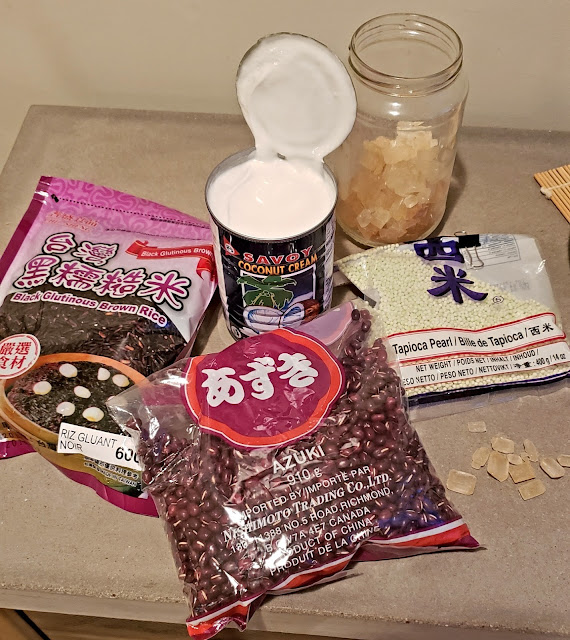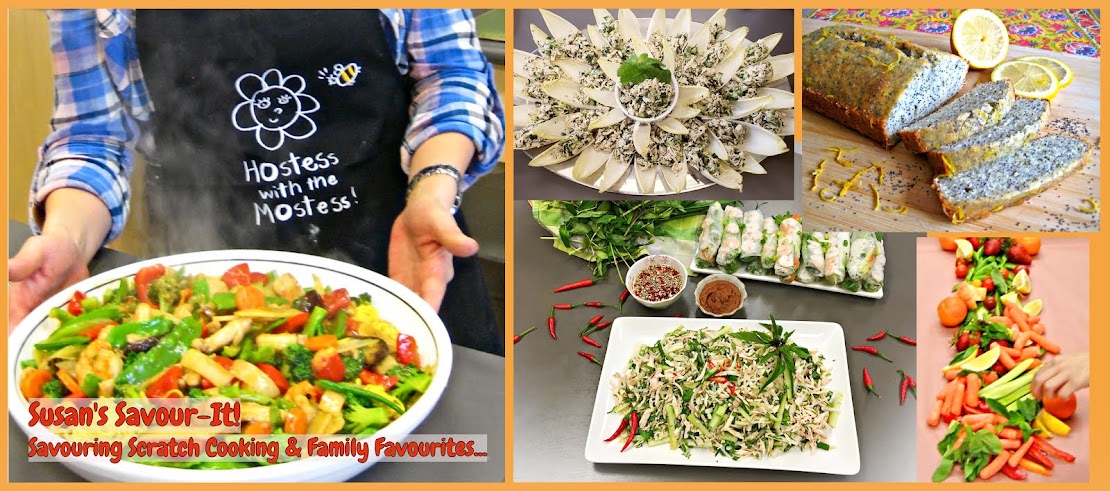Happy Chinese Lantern Festival aka Spring Lantern Festival!🏮 Today marks the final day of the traditional Chinese New Year celebrations- the end of 16 fun days! 🤗🎋 Common food eaten is tang yuan- glutinous rice balls filled with red bean or black sesame paste. I didn't make rice balls but another sweet- a delicious soup in the name of red beans, adding glutinous black rice and tapioca. Made creamy with coconut milk and a bit of sugar, it is a great alternative sweet finale to wrap up CNY! Plus its rich in protein, dietary fiber, iron and other nutrients. Just five ingredients and you are on your way to sweet comfort heaven with every spoonful- creamy mauve studded with red, purple and clear pearls, a Chinese dessert house fave! For the purist traditional red bean dessert, check out my Simple Red Bean Soup Dessert.
Red Bean Sticky Black Rice Tapioca Coconut Soup
Serves 8 to 10 (~1 cup each)
3/4 cup red adzuki beans (rinsed)
3/4 cup black glutinous rice (rinsed)
2 litres water
3/4 cup small tapioca pearls (sago)
1/2 tsp. salt
1/3 cup rock sugar or brown sugar
1 can (400 ml) coconut cream
Soak rice and beans overnight. This helps soften and lessens the cooking time. Bring water to the boil, add in black glutinous rice and red beans. Bring to the boil again, reduce to low heat, cover and cook for 1 hour 30 minutes, until both ingredients have soften. Cook the tapioca until semi-translucent. Add in salt, sugar, and coconut cream. Stir well. Bring to the boil over medium heat, add in tapioca and mix well. Bring to the boil again, then off the heat, cover and let tapioca soak for 7-8 minutes until fully translucent. Add more water for viscosity. Serve hot, warm or cold. Note: overnight the mixture will thicken, add water and adjust sweetness to desired taste.
 |
| A trio of Chinese dessert harmony! |
 |
| Cook the tapioca until semi-translucent. |
Add in salt, sugar, and coconut cream. Stir well. Bring to the boil over medium heat, add in tapioca and mix well.
Bring to the boil again, then off the heat, cover and let tapioca soak for 7-8 minutes until fully translucent.
The combo turns out a creamy mauve soup studded with red, purple and clear pearls.
A great sweet ending to wrap up Chinese New Year celebrations!
Flashback on CNY Family Reunion Dinner at my parents place. Upon arrival, a family joint prayer by burning incense proceeds. Incense sticks are lit up, held between clasped hands, wishes and prayers are silently chanted while performing a sequence of three standing bows. Then the sticks are placed into the rice bowl and left to burn until finished. We do this first looking to the sky facing the window for overall blessings and then again in front of a mini altar dedicated to our ancestors, or a food offering display. This is to pay respect to the loved ones who've passed on as well as asking for protection and good luck for the gods above.
 |
| "Bi Sun"-- prayer to the heavenly Gods and our ancestors. |
Tang yuan are glutinous rice balls stuffed with a sweet filling- such as sesame paste, red bean paste or peanut butter. It symbolizes family togetherness and is auspicious to eat on the eve of Chinese New Year to solidify family harmony for the year and also at the end of the 16 day celebration. My dad instead for our reunion dinner (eve) made our family tradition recipe from his mom, my late ma ma using plain sticky rice balls cooked in chicken soup with shredded nappa cabbage, sliced Chinese sausages, dried shrimps and minced orange peel. It isn't my favourite, but the memories of my grandma helming the kitchen every year rolling and cooking this, makes it a special food always in the hearts of my siblings and I!
My dad's family tradition recipe for savoury tang yuan.
Wishing you all a Happy, Healthy and Prosperous Year of the Earth Pig!





















































